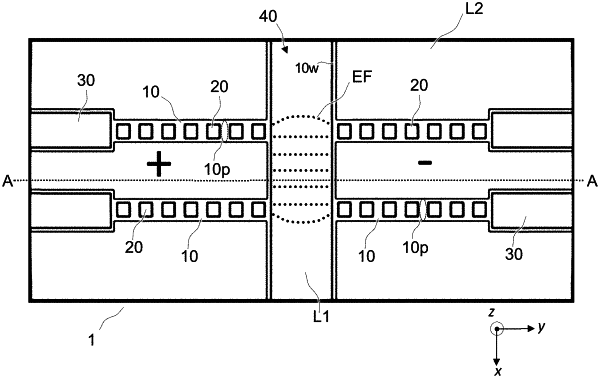| CPC B81C 1/00119 (2013.01) [B01L 3/502707 (2013.01); B01L 3/502715 (2013.01); B81B 1/002 (2013.01); B01L 2200/12 (2013.01); B01L 2300/12 (2013.01); B01L 2300/168 (2013.01); B81B 2201/058 (2013.01); B81B 2203/0353 (2013.01); B81B 2203/04 (2013.01); B81C 2201/0132 (2013.01); B81C 2201/0159 (2013.01); B81C 2201/0178 (2013.01)] | 20 Claims |

|
1. A microfluidic device comprising:
a first layer of an electrically insulating material; and
a second layer of a non-electrically insulating material extending on the first layer, wherein the second layer is structured so as to define:
opposite, lateral walls of a microchannel, a bottom wall of which is defined by an exposed surface of the first layer, thereby defining physical boundaries of the microchannel; and
one or more electrical insulation barriers, wherein each barrier of the one or more electrical insulation barriers
comprises a line of through holes, each surrounded by an oxidized region of the material of the second layer, whereby the through holes alternate with oxidized portions of said oxidized region along the line; and
extends, as a whole, laterally across the second layer up to one of the lateral walls, thereby delimiting two sections of the second layer on a same side of the microchannel.
|